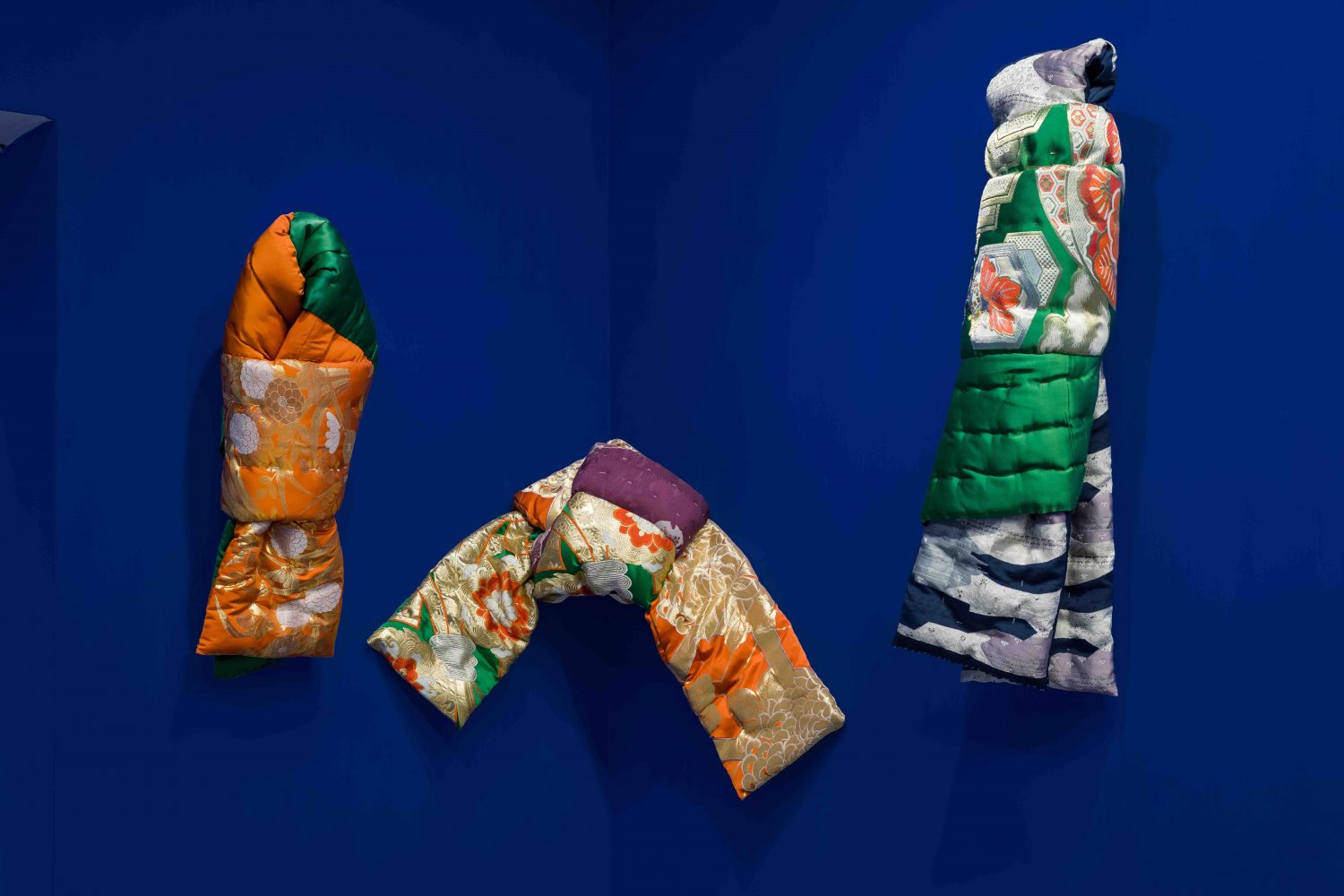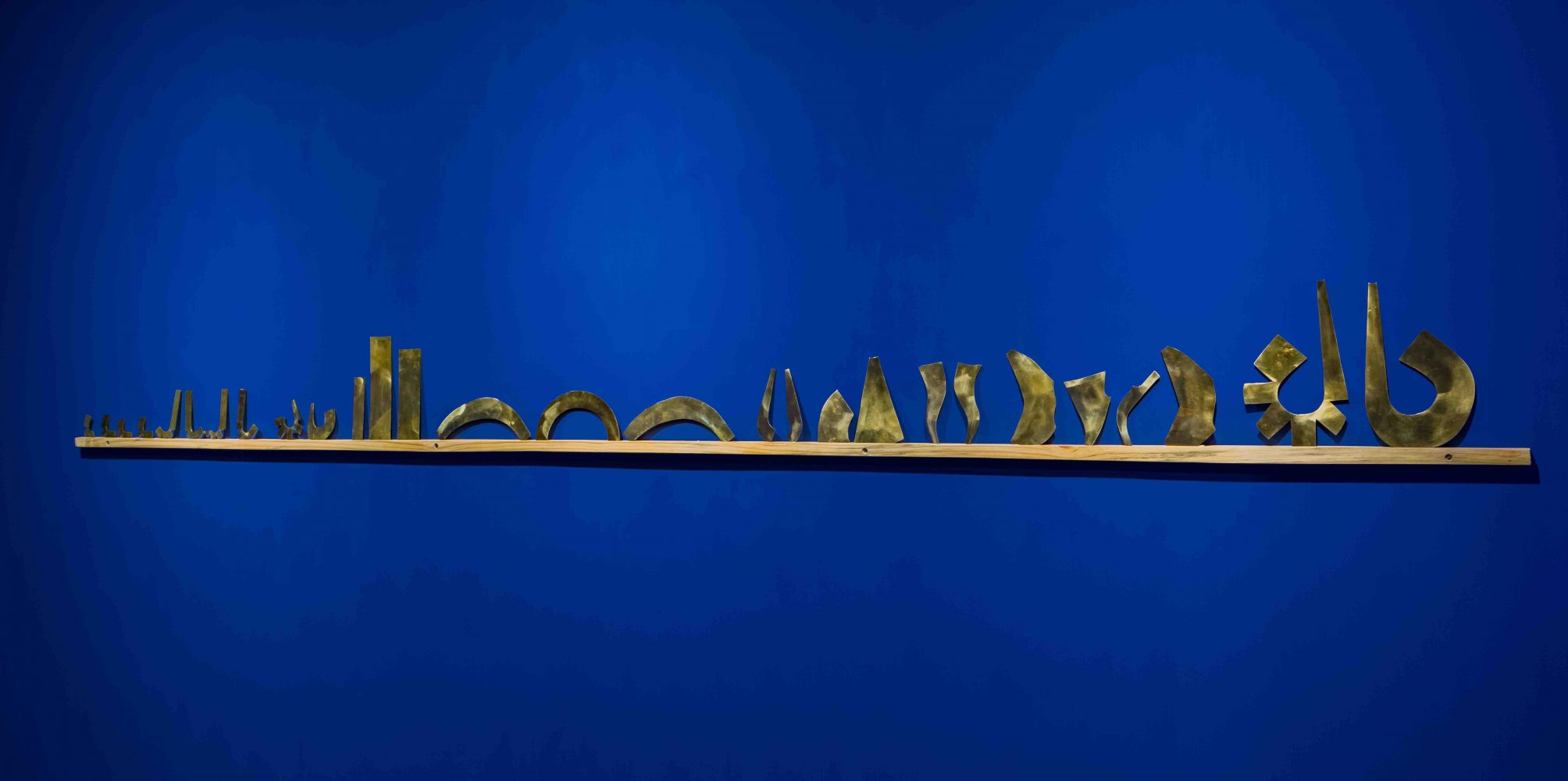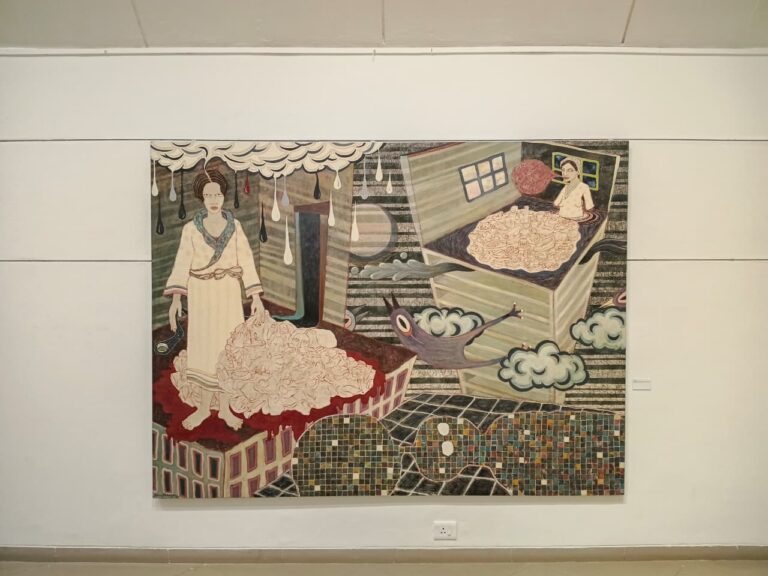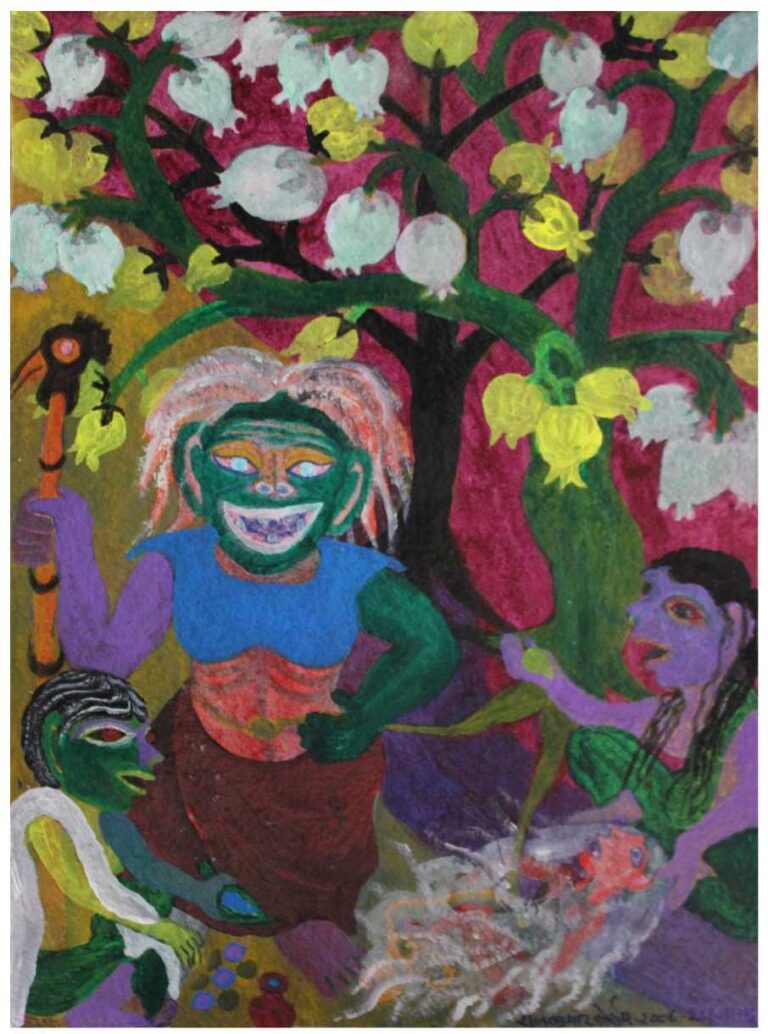A cylindrical textile object, among many, hangs suspended in one corner of the Experimenter gallery on Hindustan Road, Kolkata. It was prepared in different segments that were then sutured to offer a continuous impression. The object is made out of lighter fabric at the top, becoming progressively heavier with each panel as one moves downward. It is supposed to correspond to the changing seasons—the lightest fabric meant to recall summer, and the heaviest at the bottom meant to evoke winter. Made from kimonos of varying materials (in accordance with the seasons), the installation attests to artist and clothes-maker Kallol Datta’s oeuvre in the creation of textile objects that reject utilitarian lives in favour of standalone expositions.

Datta moved away from the runway as a designer in 2017 when he staged his first batch of textile installations at Experimenter as part of the exhibition ‘Random Access’. His explorations continued, and found an exciting trajectory a few years later at the SOAS Library, London, and subsequently, at a residency at the Aomori Contemporary Art Centre, Japan, in 2021. During his research, Datta studied clothing styles prevalent during the Showa Period in Japan (1926–89), which had undergone various shifts after the Second World War in 1945. While studying the imperial clothing edicts that were issued in rapid succession in the post-war period, he saw a parallel with the edicts issued by the Ayatollah Khomeini on women in Iran. Various tangential connections were observed, and clothes emerged as having been a historically potent area for the exercise of control and agency over minoritised bodies. These observations were bolstered by Datta’s study of the archives of photographer Shoichi Kudo during the residency, which offered similar cross-cultural resonances—such as those between the Japanese kakumaki and the chador worn in Iran. The research culminated in his second exhibition ‘Volume 3 Issue 2’.
Datta’s methodology for this exhibition took the form of online clothing drives in Japan, where he asked people to donate clothes from the late Showa era (1945-89). The donations for corresponding clothing drives in India were saris made or woven in the same period—one that not only encompassed the event of Indian independence from British rule, but also the preceding period of intensifying Swadeshi sentiment that had resulted in increased, organised production of indigenous items. These handloom textiles carried the weight of many stories from the weavers, wearers, and those who retained them after the wearers had passed. But Datta shows no obsession with the aesthetic or purported purity of the handloom that is usually attendant to nationalist narratives. Instead, he takes the stitches out of these pieces and reconstructs them into new, uninhabitable objects. This time, it is difficult to find a hemline or a neck hole as an entry point for the body; the object is meant to be comprehended in the ambiguity of its existence and the convergence of reclaimed textiles within one framework.

A range of objects is placed in the gallery in different permutations for perusal—such as an accordion-like object made out of repurposed haori and obi, and an object created out of eight circles (stitched together by the artist). If dropped to the ground, the latter object would fan out in a composite circle; the fabric thus acts like paper. Datta’s objects carry secrets around knots and folds at the kernel, and point to his practice of cutting patterns in a circular fashion at the formative stage. The circular pattern-cutting registers as an attempt to eliminate the possibility of waste, where the leftover fabric is turned into appendages for the installations. Common in the mainstream fashion industry, fabric waste accumulates in and chokes landfills. Datta’s choices come from a sensibility he actively harbours towards environmental sustainability, and his concerns around labour, means of production, and the ecological collapse of resources. To Datta, fashion has always been and must continue to be political. It has been used by state power to determine whether women can or cannot wear garments of their own choice, and is consistently used by figures of authority to project palatable images of themselves to the public. It has also been used as a tool of appropriation, where patterns worn by minoritised bodies are capitalised on for undue profit. In short, fashion has never been separate from governance.
Datta’s carefully (re)constructed objects draw attention to the neo-colonial entanglements of labour in the mainstream fashion industry, which struggles under the weight of institutional pressure to produce in response to disembodied instructions. Here, the artist works in a much smaller team, cuts patterns without the aid of advanced tools (arrived at after years of practice), and uses time and thought to imbue each object with its own story—building on the one(s) the textile already carries. One of the objects on display contains several, and varied, layers of fabric and handwork: a rehabilitated white shirt, fragments of a silk kimono, and patterns of traditional Korean quilting on cotton. The shirt, which loosely encases the other layers, carries an inconspicuous number tag that denotes a history of having been catalogued at a laundry service. The artist retains the tag in the final object, affirming its attestation to a personal history. Datta’s is ultimately a slow, conscious, and critical process of deduction, combination, and reassembly—one that responds to the cultural weaponisation of design in nationalist narratives by actively interrupting their “stitches”.

In tandem with this concern, Datta has previously worked with the veil, insisting that both the garment and the notion predate Islam (to the Middle Assyrian Empire), contrary to popular notion. His concern extended to a predilection for the shroud, and how it swallows, swaddles, and cocoons the body by rejecting its silhouette. Datta draws from the veiling practices of a diverse region: Southwest Asia, North Africa, the Korean peninsula, and the Indian subcontinent. A section in the exhibition shows a few standalone fabric sculptures that evoke the idea of the veil through the use of heavy fabric and dark colours. Datta has previously documented cisgender men in shrouds and witnessed culturally consolidated images dissipate; as a formless garment, the veil enables this amoebic perception. A range of brass miniatures is arranged on the adjacent blue wall as a skeletal archive of these (and other) patterns from when they were first drafted on paper.
Datta pits fabric against form, charting intuitive trajectories in structural experiments with cutting and sculpting. A significant leitmotif in this body of work is the additive use of paper tassels, which compels the patterns to behave differently than they would in their absence. The artist thus introduces a tension of imbalance to a benign shape, which, although seemingly decorative, alters the ontology of the textile. Datta has made one of these objects from his mother’s ikat sari, which bears hand-like extensions that could, at first, be mistakenly perceived as armholes; it is a deceptive invitation. Each object is simultaneously a remnant of its previous form and a sublimated amalgam of cultural contours. Autonomous in their final bearing, the objects are Datta’s exercises in distilling each native-wear shape to its bare template—it is at this juncture that the cultural affinities start to flourish in shape, form, and politics.
‘Volume 3, Issue 2’, Solo show by Kallol Datta, Experimenter, Hindustan Road, Kolkata, 15 July–23 September 2022.














